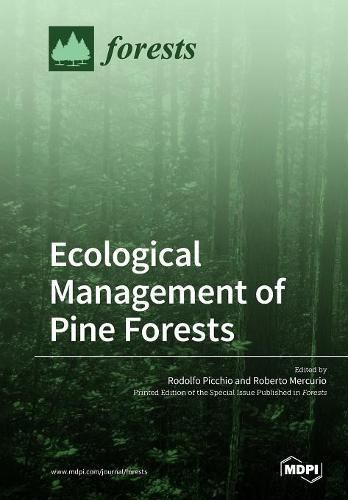Readings Newsletter
Become a Readings Member to make your shopping experience even easier.
Sign in or sign up for free!
You’re not far away from qualifying for FREE standard shipping within Australia
You’ve qualified for FREE standard shipping within Australia
The cart is loading…






This title is printed to order. This book may have been self-published. If so, we cannot guarantee the quality of the content. In the main most books will have gone through the editing process however some may not. We therefore suggest that you be aware of this before ordering this book. If in doubt check either the author or publisher’s details as we are unable to accept any returns unless they are faulty. Please contact us if you have any questions.
Natural pine forests characterize many landscapes preserved over time, either as a result of a specific forest management practice or a disturbance. In the event of a lack of management over a long period of time, these formations could evolve with increasingly chaotic structures towards other formations. This process can lead to landscape change, the spread of insects and pathogens, and the risk of fires and watercourse obstruction. Pine forest plantations should be considered as transient tree populations, destined to evolve into more complex and stable formations. However, sometimes they should be preserved for their cultural value. Careful management of these forests also takes into account the close relationship between forest and human settlements. As a first step, ecological management assumes the definition of these two macro types. These approaches include the application of integrated methods for determining the reference conditions of the main functional and structural ecosystem components of forests. The reference conditions are the historical (or natural) variability range of ecological structures and processes, reflecting the recent evolution and dynamic interaction of biotic and abiotic conditions and patterns of disturbance. These conditions form the basis for comparison with contemporary ecosystem processes and structures and are a frame of reference for designing ecological restoration treatments and conservation plans. The productive aspects must not be overlooked; rather, they have to be considered, planned, and managed with a perspective of sustainability and ecosystem functionality. This should be considered for a common approach to forest management, for a forest rehabilitation, and for forest restoration activities.
$9.00 standard shipping within Australia
FREE standard shipping within Australia for orders over $100.00
Express & International shipping calculated at checkout
This title is printed to order. This book may have been self-published. If so, we cannot guarantee the quality of the content. In the main most books will have gone through the editing process however some may not. We therefore suggest that you be aware of this before ordering this book. If in doubt check either the author or publisher’s details as we are unable to accept any returns unless they are faulty. Please contact us if you have any questions.
Natural pine forests characterize many landscapes preserved over time, either as a result of a specific forest management practice or a disturbance. In the event of a lack of management over a long period of time, these formations could evolve with increasingly chaotic structures towards other formations. This process can lead to landscape change, the spread of insects and pathogens, and the risk of fires and watercourse obstruction. Pine forest plantations should be considered as transient tree populations, destined to evolve into more complex and stable formations. However, sometimes they should be preserved for their cultural value. Careful management of these forests also takes into account the close relationship between forest and human settlements. As a first step, ecological management assumes the definition of these two macro types. These approaches include the application of integrated methods for determining the reference conditions of the main functional and structural ecosystem components of forests. The reference conditions are the historical (or natural) variability range of ecological structures and processes, reflecting the recent evolution and dynamic interaction of biotic and abiotic conditions and patterns of disturbance. These conditions form the basis for comparison with contemporary ecosystem processes and structures and are a frame of reference for designing ecological restoration treatments and conservation plans. The productive aspects must not be overlooked; rather, they have to be considered, planned, and managed with a perspective of sustainability and ecosystem functionality. This should be considered for a common approach to forest management, for a forest rehabilitation, and for forest restoration activities.